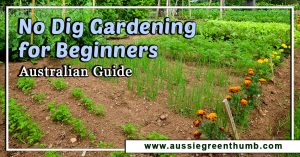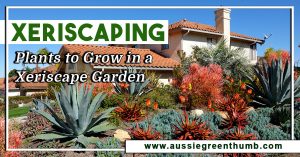You’ve heard of water gardens, no dig gardens, Japanese gardens and formal gardens. But what is a rain garden? Is it some kaleidoscope of rain forest meets xeriscaping? Or, does it entail irrigating your garden from rain barrels? Let's find out.
More...
What is a Rain Garden?
Rain garden is just a relatively new term used to describe the process of capturing run-off from your gutters and drains and directing it into your garden beds. Basically your garden areas become soaks. They fill with water and then let it escape through the soil.
The reason rain gardens are becoming so popular is due in part to our love affair with covering the ground. Paving, asphalt, concrete and other impervious materials used to make our journeys more convenient hinder rain fall from seeping into the soil. Instead it runs off into storm water drains taking a plethora of pollutants with it.
Each year this resource falls our way and every season we try to get rid of it. The idea behind a rain garden is that rather than diverting it away from your plants and landscaped areas you actually embrace it and incorporate an area to receive this precious commodity.
How to Create a Rain Garden?
There are a ton of ideas around these days on how to transition your garden to start accepting storm run-off. But, the best resource I’ve found is this How-To Manual developed by the Wisconsin Department of Natural Resources.
It outlines the benefits of creating a rain garden, shows you how to create one and then how to maintain it once you have one installed.

What Type of Soil is Needed for a Rain Garden?
Logically one would assume that if you’re trying to create a garden bed where water can be diverted to, then you need a sandy, well-draining soil. This is true and is certainly easier than creating a rain garden in a bed wrought with clay. But, gardeners who struggle with clay soils can still make these a part of their backyard as well.
While a sandy or well-draining loam means the water can dissipate faster in a small area, those with clay soils will just need to increase the size of their garden beds thus enlarging the surface area. Obviously, adding organic material will improve the drainage of clay soils too.
Do Rain Gardens Still Need Reticulating?
If you rely on reticulation for your summer watering this won’t change, although you may find it won’t need to be used as often. Rain gardens are mainly for winter rainfall. Primarily, a rain garden's purpose is to re-divert the run-off more than irrigate your plants. Watering your plants is really a side benefit to the whole process.
If you wanted to cut down your watering requirements during summer then you would opt to divert this run-off to rain barrels or other water storage infrastructure.
What Types of Plants Can Be Grown in a Rain Garden?
Most plants will still grow fine in a well-constructed rain garden. Those that are particularly disliking wet feet can be grown in other areas but most will grow as well, if not better, in this environment.
Choosing native plants that are indigenous to your area will have greater success because they’re already accustomed to your climates' annual rainfall.
Wrapping Up Our Guide to Rain Gardens
These aren’t the next gimmicky trend in garden styles. In fact, if more gardeners were to landscape one of these in their backyards we could certainly do a little more for preserving our environments.
Published on June 7, 2023 by Nathan Schwartz
Last Updated on December 23, 2023



